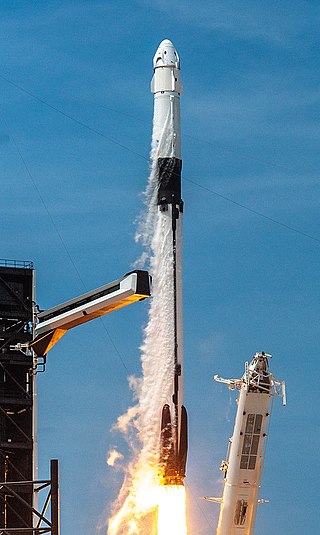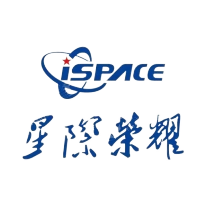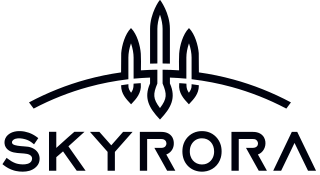
A reusable launch vehicle has parts that can be recovered and reflown, while carrying payloads from the surface to outer space. Rocket stages are the most common launch vehicle parts aimed for reuse. Smaller parts such as rocket engines and boosters can also be reused, though reusable spacecraft may be launched on top of an expendable launch vehicle. Reusable launch vehicles do not need to make these parts for each launch, therefore reducing its launch cost significantly. However, these benefits are diminished by the cost of recovery and refurbishment.

This is a timeline of first orbital launches by country. While a number of countries, incl. Canada, Australia, Germany, Brazil, Algeria, Kazakhstan, Turkey, Argentina, Italy, Malaysia, Poland, South Africa, the Philippines, Egypt, Spain, Mexico, Thailand and Chile, have built or launched satellites, as of 2022, eleven countries, incl. the United States, Japan, China, India, Iran, Israel, France, the United Kingdom and South Korea, have had the capability to send objects into orbit with their own launch vehicles. Russia and Ukraine inherited the capability of the space launchers and satellites from the Soviet Union, following its dissolution in 1991. Russia launches its rockets from its own and foreign (Kazakh) spaceports.
UP Aerospace, Inc. is a private spaceflight corporation headquartered in Denver, Colorado. UP Aerospace provides sub-orbital transportation for corporate, military and educational payloads, via their SpaceLoft XL sounding rocket launch vehicles.
The SpaceLoft XL is a sounding rocket developed by private spaceflight company UP Aerospace. The rocket is capable of lofting a 79 lb (36 kg) payload to a sub-orbital trajectory with an apogee of about 71.5 miles (115 km). It travels for approximately 60 seconds to cross the Kármán line. All launches are sub-orbital and do not complete one orbital revolution. Launches are conducted from the company launch facility at Spaceport America in Upham, New Mexico.

Abbot Point Port is home to the North Queensland Export Terminal (NQXT), the most northerly deepwater coal port of Australia, situated approximately 25 kilometres (16 mi) north-west of the township of Bowen (Queensland). Established in 1984, it consists of a rail in-loading facility, coal handling and stockpile areas, and a single trestle jetty and conveyor connected to a berth and shiploader, located 2.75 km off-shore. Coal reaches the port via the GAP railway line from the Bowen Basin Coalfields.

This article lists all active and upcoming orbital launch systems. For retired launch vehicles, see Comparison of retired orbital launch systems.

The XCOR Lynx was a proposed suborbital horizontal-takeoff, horizontal-landing (HTHL), rocket-powered spaceplane that was under development by the California-based company XCOR Aerospace to compete in the emerging suborbital spaceflight market. The Lynx was intended to carry one pilot, a ticketed passenger, and/or a payload above 100 kilometres (62 mi) altitude. The concept was under development since 2003, when a two-person suborbital spaceplane was announced under the name Xerus.

Minotaur IV, also known as Peacekeeper SLV and OSP-2 PK is an active expendable launch system derived from the LGM-118 Peacekeeper ICBM. It is operated by Northrop Grumman Space Systems, and made its maiden flight on 22 April 2010, carrying the HTV-2a Hypersonic Test Vehicle. The first orbital launch occurred on 26 September 2010 with the SBSS satellite for the United States Air Force.

This article compares different orbital launcher families. The article is organized into two tables: the first contains a list of currently active and under-development launcher families, while the second contains a list of retired launcher families.

Astra Space, Inc. is an American launch vehicle company based in Alameda, California. Astra was incorporated in October 2016 by Chris Kemp and Adam London. Formerly known in media as "Stealth Space Company", the company formally came out as Astra Space, Inc. in a Bloomberg L.P. article by Ashlee Vance. Investors include BlackRock, Advance, ACME, Airbus Ventures, Innovation Endeavors, Salesforce co-founder Marc Benioff, former Disney CEO Michael Eisner, and more.

Electron is a two-stage, partially reusable orbital launch vehicle developed by Rocket Lab, an American aerospace company with a wholly owned New Zealand subsidiary. Electron services the commercial small satellite launch market. As of May 2024, it's the third most launched small-lift launch vehicle in history. Its Rutherford engines are the first electric-pump-fed engine to power an orbital-class rocket. Electron is often flown with a kickstage or Rocket Lab's Photon spacecraft. Although the rocket was designed to be expendable, Rocket Lab has recovered the first stage twice and is working towards the capability of reusing the booster. The Flight 26 (F26) booster has featured the first helicopter catch recovery attempt.
Exos Aerospace Systems & Technologies is an aerospace manufacturer and developer of reusable launch systems intended to support uncrewed orbital spaceflight launches, and is based in Caddo Mills, Texas.
A medium-lift launch vehicle (MLV) is a rocket launch vehicle that is capable of lifting between 2,000 to 20,000 kg by NASA classification or between 5,000 to 20,000 kilograms by Russian classification of payload into low Earth orbit (LEO). An MLV is between small-lift launch vehicles and heavy-lift launch vehicles.

Vector-R is a two-stage orbital expendable launch vehicle under development by the American aerospace company Vector Launch to cover the commercial small satellite launch segment (CubeSats). Vector Launch went bankrupt in December 2019 and re-emerged in October 2020. Two prototypes were launched in 2017.

i-Space —also known as Space Honor, Beijing Interstellar Glory Space Technology Ltd., Interstellar Glory or StarCraft Glory—is a Chinese private space technology development and space launch company based in Beijing, founded in October 2016.

Skyrora Ltd is a British private space company based in Edinburgh, Scotland, since 2017.

BluShift Aerospace is an employee-owned American aerospace firm based in Brunswick, Maine. Targeting the growing smallsat and cubesat launch markets, bluShift is developing suborbital sounding rockets and small-lift orbital rockets which will be launched from a proposed new spaceport in Maine. The company has received primary funding from NASAs SBIR grant program, the National Science Foundations I-Corps grant program, the Maine Technology Institute, and the Maine Space Grant Consortium. The company has active operations at the former Brunswick Naval Air Station and Loring Air Force Base.

Equatorial Space Systems PTE LTD. also known as Equatorial Space, is a Singapore-based company that develops hybrid-engine rockets and space launch services. The company was founded by Simon Gwozdz and Praveen Ganapathi Perumal in 2017 in Singapore, with the goal to develop low-cost, safe and eco-friendly space launch vehicles.

HyImpulse is a German private space launch enterprise headquartered in Neuenstadt am Kocher and developing a small launch vehicle designed around hybrid-propellant rockets. The company is a DLR spinoff founded in 2018 out of the chemical propulsion center of the German space agency's Lampoldshausen facility. HyImpulse is bankrolled by Rudolf Schwarz, chairman of German technology company IABG.















